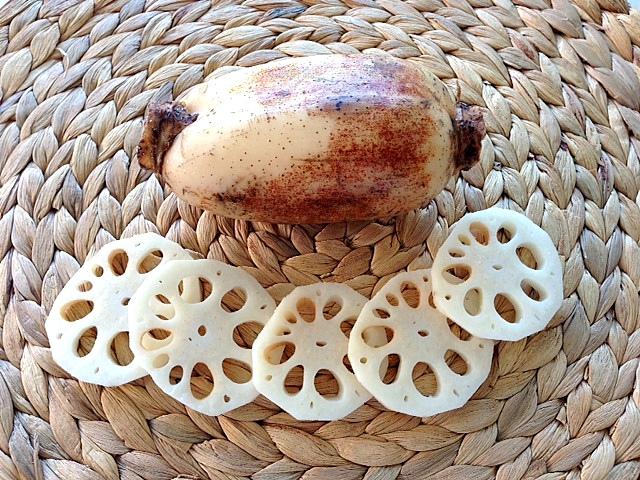Lotus Root
Lotus root is the edible rhizome (the subterranean stem) of the lotus plant, a perennial aquatic plant that grows beautiful pink-hued or white flowers.
Native to Asia, Australia, New Guinea and parts of the Middle east, lotus plants grow in the mud of shallow ponds, marshes, lagoons, and flooded fields. Lotus roots are harvested from the beginning of August until fall. The traditional farming method consists of farmers feeling for the rhizome using their toes and then digging them out with their hands. Almost every part of the lotus plant is edible.
Lotus roots are cylindrical and brown. However, once sliced crosswise, you will see a lace-like design with pea-sized holes. The root is crunchy, mild in flavor, and very delicious. They are available year-round at Japanese or other Asian grocery stores and may even be found at farmers markets. Look for firm roots with a smooth and unblemished skin.
They are best kept in the refrigerator and when they are ready to be used, trim the ends and peel the outer skin. Slice them thinly or cut into cubes. They brown easily so rinse the slices in vinegar or lemon water before cooking. They can be cooked in chicken, vegetable or pork broth (lotus root soup), stir fried, steamed, braised or tempura fried. Lotus roots are very popular in Southeast Asian and Japanese cuisines.
Lotus roots are low in cholesterol and saturated fat. They are rich in vitamin C and a good source of dietary fiber, vitamin B6, thiamin, phosphorus, potassium, copper and manganese.


